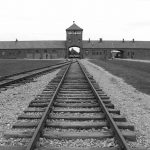World War II History
The Allies won World War II in 1945 via cooperation and strategic partnerships. Germany attacked Poland in September 1939, initiating WWII. After Nazi rule in Europe, the Soviet Union and the US joined this alliance to stop the Axis, transforming the conflict.
Polish and Soviet Influence on WWII Dynamics
The Soviet Union and Poland altered European WWII. The June 1941 Nazi invasion of the Soviet Union inspired the Red Army to advance west to Berlin. Poland’s resistance to the September 1939 invasion that opened World War II and support of the Allies proved its resilience and strategic value in diminishing German operations. The Soviet Union’s military power affected the Allies and Axis in the Russo-Finnish War (Winter War). Despite ideological differences, the US and USSR created a two-front war that decimated German resources. The last great German onslaught, the Battle of the Bulge, proved how crucial Allied cooperation was to defeating Hitler.
From the Soviet invasion to the Pacific War, WWII’s key battles
From the Soviet invasion until the Pacific War, several major wars shaped World War II. Operation Barbarossa, the June 1941 German invasion of the Soviet Union, transformed the European conflict by pitting Soviet forces against the Germans, who eventually withdrew. The Pacific War shifted after the US Navy defeated the Japanese at Midway in June 1942. The July 1943 Allied invasion of Sicily weakened the Axis powers in Europe, bringing down Mussolini and enabling the Allied victory. These conflicts demonstrate the strategic movements and sacrifices of Allied and Axis troops that led to German capitulation and the bombings of Hiroshima and Nagasaki, which concluded World War II.
Holocaust, casualties, and May 1945 Triumph
May 1945 captured Europe’s darkest and most resilient World War II moments. Germany massacred six million Jews and millions of others it regarded undesirable in the Holocaust. All sides suffered record military and civilian losses, deepening the war. Hitler committed suicide in April 1945, which led to the ending of the Third Reich and a decisive victory for the Allies.
February and July 1943’s Russo-Finnish War changed WWII.
Russo-Finnish War, a prelude to World War II in Europe, proved Finnish tenacity against the USSR. Finland’s resiliency against overwhelming odds exposed Soviet military deficiencies. After the Battle of Stalingrad in February 1943, the German Army lost and the European War changed. This battle prevented German forces from entering the USSR and began a protracted westward push. By July 1943, the Battle of Kursk, one of the greatest tank battles, weakened the Germans and reinforced the Soviet Union in Europe. These events helped the Allies defeat Nazi Germany in northern France and abroad.
The Holocaust: A Dark Period
One of the deadliest periods in history is the Holocaust. Hitler’s genocide included political prisoners, gays, disabled people, Nazi opponents, and Jews. Many death and concentration camp sprung out as part of the „Final Solution”, including the infamous Auschwitz I and Auschwitz II Birkenau. Holocaust was a tragic catastrophe that showed the consequences of racism and intolerance. Remembrance and education are essential to preventing discrimination and genocide because the world is aware of these tragedies and wants to prevent them.
FAQs
What led the Soviet Union to strike Germany and how did it effect WWII?
After Operation Barbarossa, the USSR declared war on Germany in June 1941. This revolutionized the conflict by opening the Eastern Front, a devastating WWII battlefield. The Soviet Union diverted German resources and won back Stalingrad. Despite ideological differences, the Soviet Union and other Allies waged a two-front war that eventually destroyed Nazi Germany.
How did the Holocaust effect WWII Poland and the USSR?
Holocaust destroyed Poland and the USSR. Poles had large Jewish populations before the war, therefore Auschwitz and other ghettos killed millions. The German invasion of the USSR led to numerous Jewish murders. WWII’s awful human cost and the Holocaust’s darkness were shown in both countries’ huge human loss and communal destruction.
Hiroshima and Nagasaki — essential to ending WWII?
WWII ended suddenly when Hiroshima and Nagasaki were destroyed on August 6 and 9, 1945. The only wartime use of atomic bombs was the US bombings. Japan surrendered on September 2, 1945, ending the Pacific Front, and the war in general. Events proved nuclear bombs’ destructive potential and inaugurated a new era of warfare, creating ethical and moral issues that exist until today.
How did the Allied Sicily invasion overthrow Mussolini?
After July 1943’s Sicily assault, Benito Mussolini was overthrown. The Italian Campaign began after Allied forces arrived on the island, showing Mussolini’s and Italy’s military weaknesses. The invasion made the Italian people and political class distrust Mussolini, ultimately to his incarceration and the Fascist demise. This helped the Allies attack Italy and weaken the Axis in Europe.
What impact did Midway have on the Pacific War?
The June 1942 Battle of Midway altered the Pacific War. The US’s first big victory over the Japanese navy ended Japan’s expansionist aims and shifted the war to the Allies. The US Navy destroyed 4 Japanese aircraft carriers that helped attack Pearl Harbor to degrade Japanese naval supremacy and prepare their advance throughout the Pacific.



